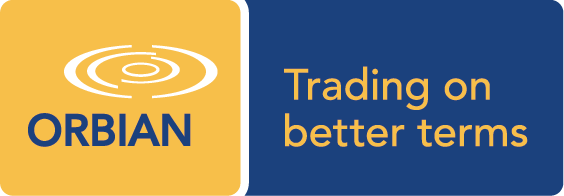Orbian Issues Guidance to Clients on Global “IBOR” Transitions
What is LIBOR?
Interest rates can be fixed or alternatively calculated by reference to benchmark rates. The London Interbank Offered Rate (LIBOR) is one of the most used benchmarks for interest rates and is referenced in financial products such as derivatives, bonds, loans, structured products, mortgages and student loans. It often forms the basis on which interest payments under those products are calculated.
LIBOR is published on each London business day and is administered by ICE Benchmark Administration (IBA). It is based on quotations received from LIBOR panel banks, which are a group of banks who provide information to IBA as to the amount it would cost them to borrow from other banks so that an average can be calculated and published.
LIBOR is published in five currencies (euro, Japanese yen, pound sterling, Swiss franc, and US dollar) and for seven interest periods (ranging from overnight to 12 months. Certain currencies also use specific benchmarks such as EURIBOR and EONIA for EUR, the Tokyo Interbank Offered Rate (TIBOR) for JPY, the Hong Kong Interbank Offered Rate (HIBOR) for Hong Kong Dollar and the Singapore Interbank Offered Rate (SIBOR) for Singapore Dollar.
Orbian uses LIBOR (and other published reference rates) to calculate the discount charges as set forth in your Orbian agreement and pricing schedule.
What is the “LIBOR transition” all about?
The issues which have affected the perceived robustness of LIBOR (such as the lack of interbank lending transactions on which to base the rate) have caused central banks to plan to transition away from LIBOR. This transition also affects other interbank offered rates (IBORs) such as the Euro Interbank Offered Rate (EURIBOR). In addition to IBORs, other interest rate benchmarks are being looked at. For example, the Euro Overnight Index Average (EONIA) started using a new calculation methodology on 2 October 2019 and it is scheduled to be replaced by €STR from 3 January 2022.
In the United States, the preferred near risk-free rate (which is called the Secured Overnight Financing Rate or SOFR) is a new rate. Currently, the most frequently used overnight interest rate benchmark in the United States is the Effective Federal Funds Rate (EFFR). In connection with the transition away from US dollar LIBOR, a working group in the United States that consists of both private and public sector entities (the Alternative Reference Rates Committee or ARRC) is currently planning a transition to SOFR. This transition will result in SOFR being used instead of EFFR in several cases, although we expect that term SOFR rates will also be created and published. Other rates are also being looked at in, among other places, Hong Kong, Singapore, Switzerland, Japan, Australia, and Canada.
What is Orbian doing concerning the LIBOR transition?
Orbian is aware that the discontinuation of LIBOR or other IBORs may impact both its new and existing products and services and that the impact on all parties, including clients, will need to be carefully considered. Orbian is conducting due diligence to review and confirm how LIBOR and other IBORs are used in ORBIAN products or services, and how any transition will affect our products and services. Orbian is monitoring this situation closely and, where appropriate, will provide clients with further information.
While Orbian’s internal planning and due diligence on these changes has already started, it is not yet possible to accurately determine the precise impact on all parties, including clients, until a replacement for the existing benchmark rates (including the preferred near risk-free rate and any necessary adjustments for terms, or new term reference rates) have been confirmed at industry level and until more information is known on the timing of the changes.
Orbian will continue to inform clients concerning the changes, notably when there is more certainty on which new benchmarks are being adopted, their methodology, their term structure and the transition process agreed at industry level.
Will my discount charges go up?
As of the time of this writing, mid-April 2021, Orbian does not believe that the LIBOR transition will in and of itself cause discount charges to go up. While there may be adjustments to the underlying base rates for discounts and associated spreads, we similarly believe it is unlikely that discount charges will be affected in any material respect.
What is the timing of the changes?
One of the most uncertain aspects of the proposed transitions lie in the timing. Also, it is certainly the case that transitions will be accomplished over time, and not all at once. There are existing reports that transitions for Pounds Sterling will commence at year end 2021, the other LIBOR currencies commencing 2023 and transitions affecting Euro rates in small steps through 2025. Orbian will release information for the Pounds Sterling transition shortly.
Can I mitigate actual or perceived risk?
As referenced above, Orbian does not anticipated a material risk profile relative to rates in respect of the LIBOR transition. However, our valued vendor clients may always inquire about converting to a fixed discount charge now for a committed period of one or two years. Contact your Orbian program relationship manager for more information about fixed charges.
Questions?
If you have any questions about LIBOR transition, or transitions concerning any other currency, please submit them via email to [email protected].
